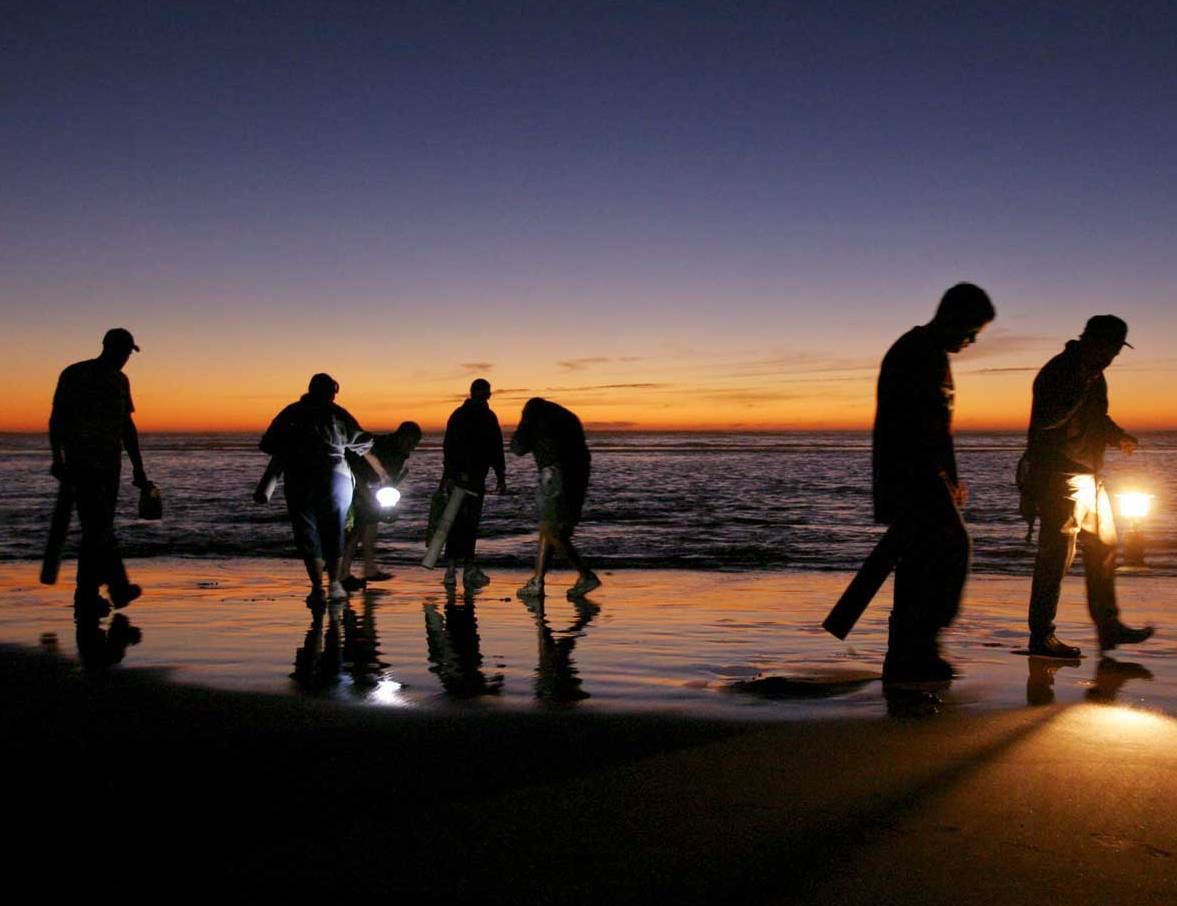The outlook is bleak for any chance of opening razor clam digs at any beach this season, with stubbornly high domoic acid levels continuing to make the clams unsafe to eat.
“No future razor clam dates will be announced until domoic acid levels in razor clams drop below the action level,” read a statement from the state Department of Fish and Wildlife Monday. “We have no projections of when that might be. However, we do know that in three of the four major domoic acid events that occurred in the fall — 1991-92, 1997-98, and 2002-03 — domoic acid levels in razor clams remained elevated through the end of the season.”
A season typically runs October through April or May but varies from year to year.
In 2020, razor clam digs were shut down in mid-May due to conflicts with the state’s stay at home COVID-19 order. They reopened in mid-September 2020 — the earliest season opener in 30 years — when diggers found excellent clamming. About a month later, domoic acid levels rose to the point where all digging had to be shut down. Domoic acid is a naturally occurring marine toxin and at high levels can make people sick.
The “action level” for domoic acid is 20 parts per million. The most recent razor clam meat samples tested by the state Department of Health show levels well above that at all razor clam beaches, ranging from 26 parts per million at Copalis Beach to 57 parts per million at Long Beach.
“Washington razor clams continue to follow the historical pattern of slowly depurating (losing) domoic acid,” said Fish and Wildlife coastal shellfish manager Dan Ayres. “The hope for getting a chance to dig any time soon is fading.”
Ayres said tests are also showing the levels of domoic acid “bouncing around” considerably, as they have in past events. The toxin load can vary greatly in the 12 individual clams collected for testing.
“The laboratory protocol requires the clams to be cleaned and then the meat from all 12 — per area — are blended together,” said Ayres. “Then a sample of that mixture is analyzed and one result is reported for that area.”
Current test results, and a historical record of domoic acid events, can be found at wdfw.wa.gov/fishing/basics/domoic-acid/levels. Click on “show historical data, then hover your cursor over the data points for more detail.
Along with sampling razor clams every two weeks, Fish and Wildlife and other partners in the Olympic Region Harmful Algal Bloom partnership continue ongoing observations of the surf zone phytoplankton assemblages. Domoic acid is a naturally occurring toxin produced by certain types of algae that can be harmful or even fatal to humans if shellfish consumed tests higher than the action level for safe consumption.


